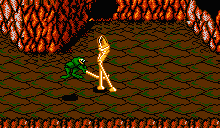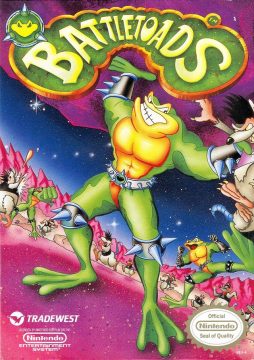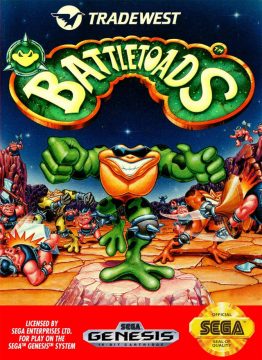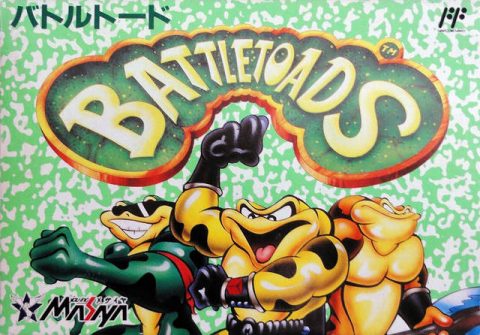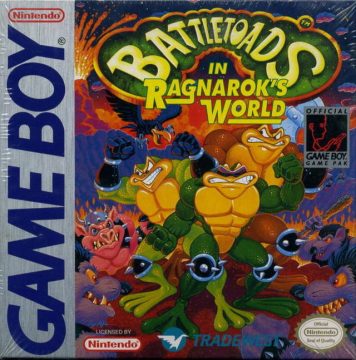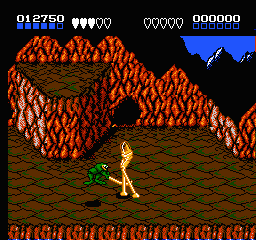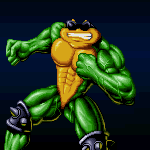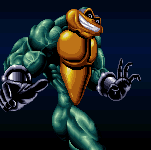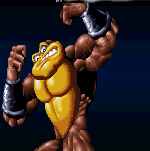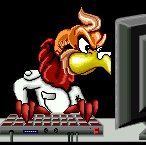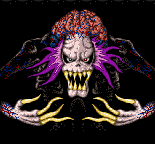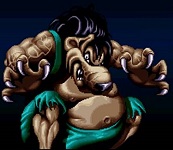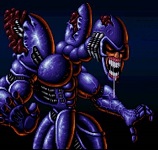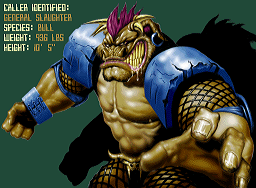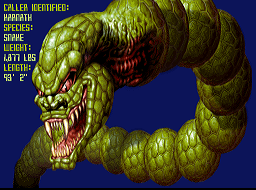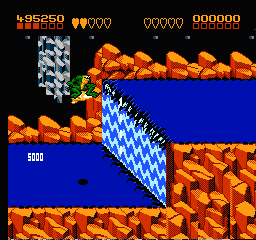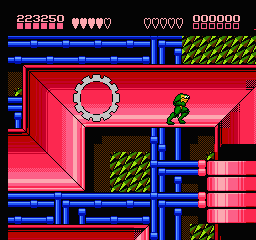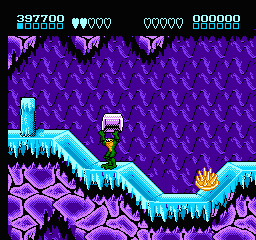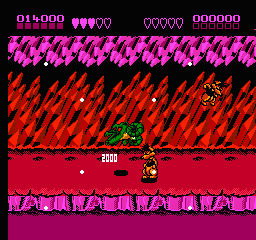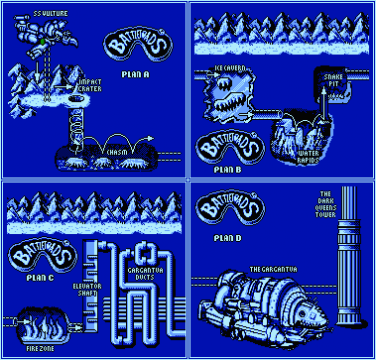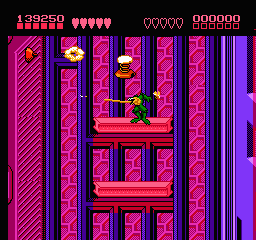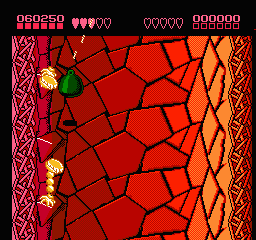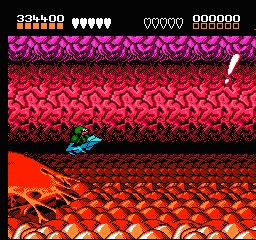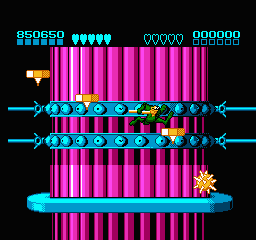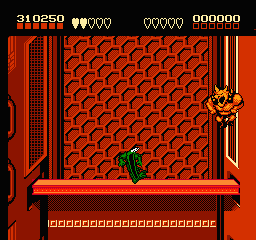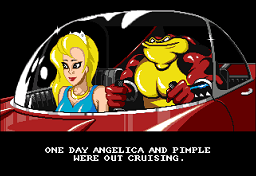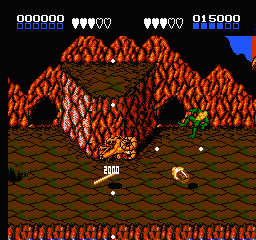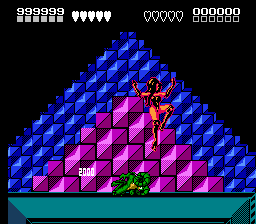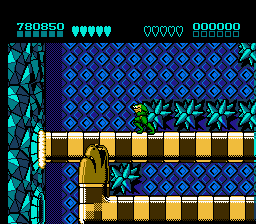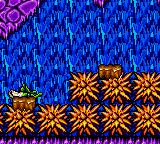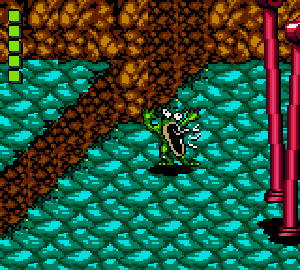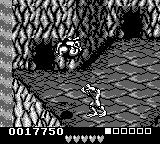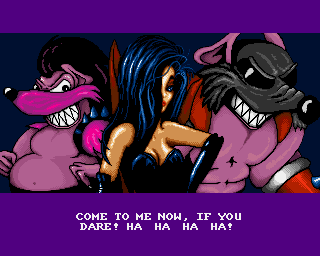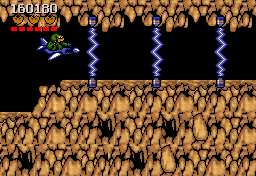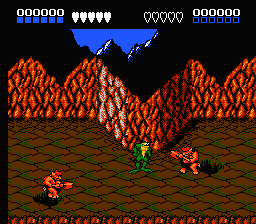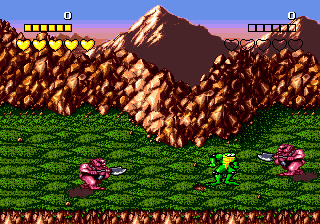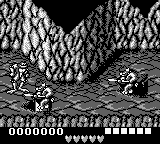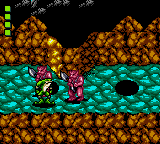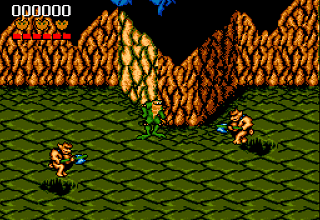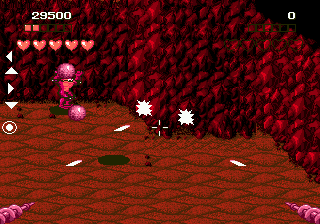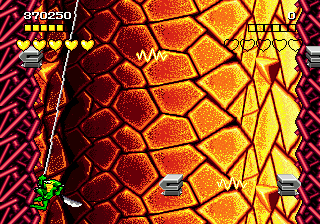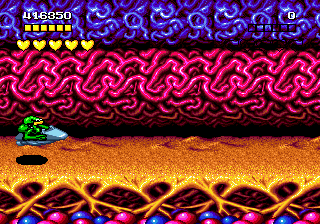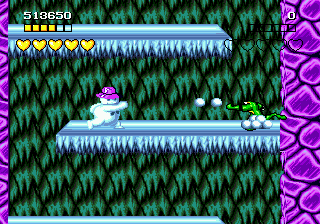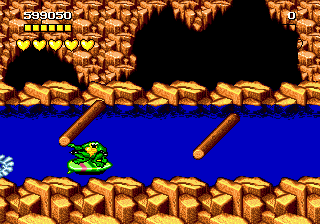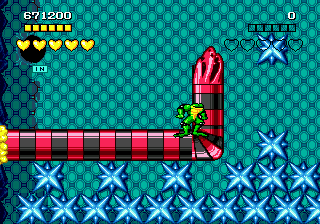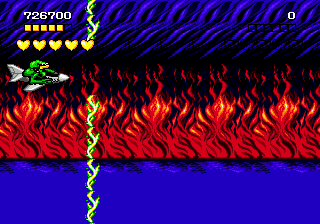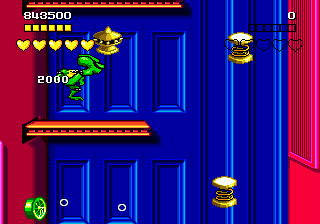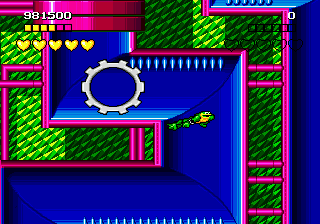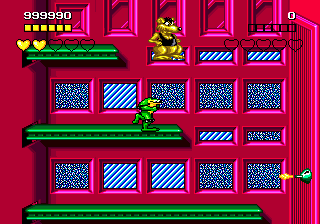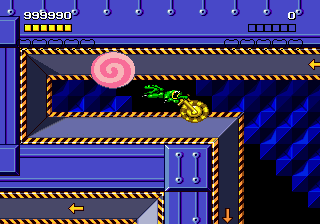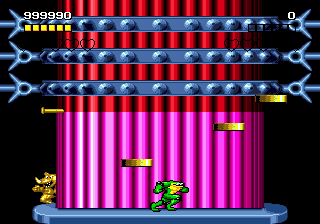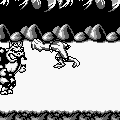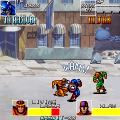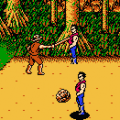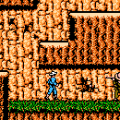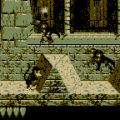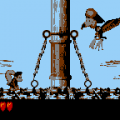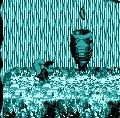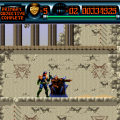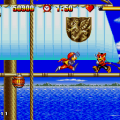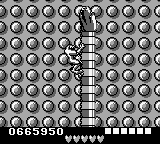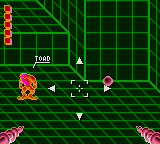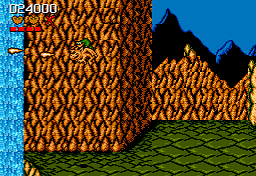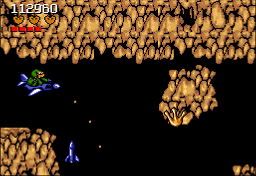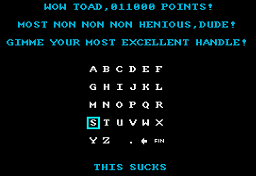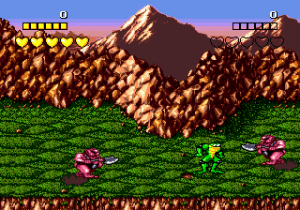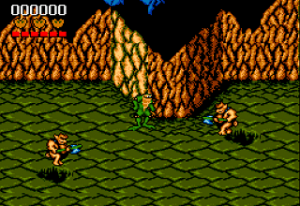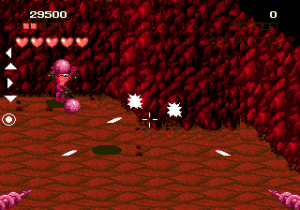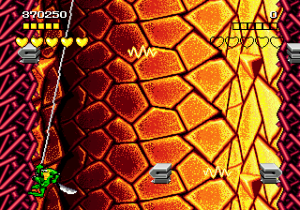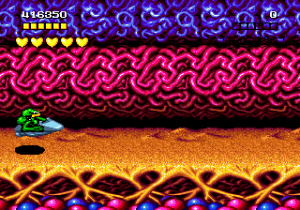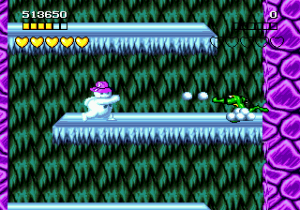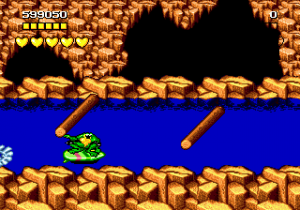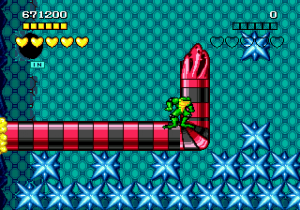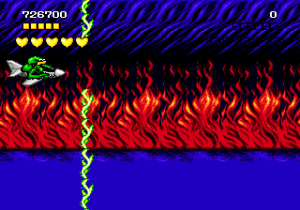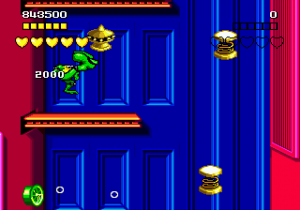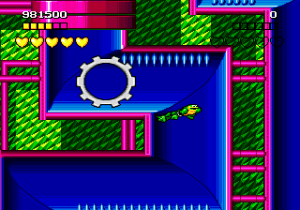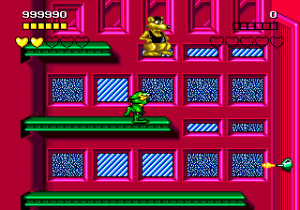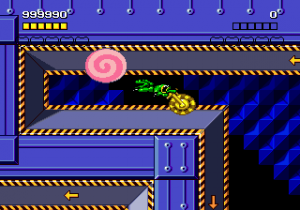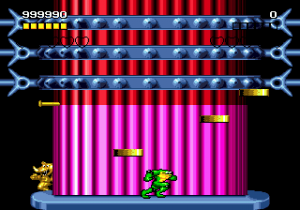In the early 1990s, the Teenage Mutant Ninja Turtles media franchise was at the height of its power as cultural phenomenon. It might be difficult for younger readers to imagine given the reduced state of its output today, but Turtle-mania was rampant as comics paved the way for cartoons, which led to action figures, feature films, video games, and every sort of commercial product imaginable, making the craze a sort of cultural midpoint between Hulkamania and the future madness of Poke-mania. As the natural consequence of being popular, TMNT’s success led to a swarm of increasingly goofy mutant-themed knock-offs hoping to glean some of the franchise’s consumer dollars, the most notable of these including Biker Mice from Mars, Street Sharks, Road Rovers, Cheetahmen, and Extreme Dinosaurs, with less obvious, non-anthropomorphic mutant franchises including Toxic Crusaders and Mutant League. With the exception of Active Enterprises’ wretched Cheetahmen games, these mostly attempted to challenge the Turtles on the animation/action figure front, offering a less inspired but functionally competent product for the pre-teen demographic, but one particularly bold series attempted to compete with the Turtles’ gaming output with a set of equally stylish beat-em-ups. While not managing to approach TMNT’s level of fame or influence, the brief series’ renowned difficulty and drastic gimmicks are arguably more memorable than the consistent approach of the Turtles’ games and have carved out a niche following that is yet clamoring for a reboot, if often in a tongue-in-cheek manner.
Is this Battletoads? Why yes, this time it is.
Developed by Rare, who’d later score some major hits with Donkey Kong Country, Banjo-Kazooie, and Goldeneye 007, the Battletoads games follow the adventures of the three titular Toads, Rash, Zitz, and Pimple, as they battle throughout the galaxy. The TMNT parallels are numerous and obvious: the Battletoads have a wise old mentor in Professor T. Bird, a wise-cracking, perpetual nemesis in the Dark Queen, a formidable-looking but ultimately ineffective rogues gallery of the Dark Queen’s right-hand men to serve as bosses, a massive army of regular mooks to bash in the Queen’s rodent army, and the occasional damsel-in-distress to save. Key differences include the Toads special ability to transform their limbs into a variety of comical weapons (sledgehammers, wrecking balls, giant sneakers, etc.) and the fact that none of the Battletoads games really bother to set up any kind of backstory to the games’ events. While the Turtles’ origin story is intrinsically tied to their characterization (and was already well-known by the time the games were released), the player is thrown right into the Battletoads’ mythos with knowledge only of the impending peril at hand, without any sort of explanation of where the Toads come from, why they’ve been given such repulsive names, why they’re always battling with the Dark Queen, or how she managed to recruit a near-infinite army of rodents, axe-wielding pigs, and bio-technological weirdos. Grave mysteries, unless you happened to have read the canonical Nintendo Power comic or saw the one-off animated pilot. As we’ll see, these revelations somehow make these proceedings seem even more absurd. Some questions are perhaps better left unanswered.
Good Guys
Rash
Obviously the coolest Toad, since he’s the only one with sunglasses. Rash is also perceived as the leader of the group (though the bios in the arcade game intro say otherwise, since he’s player one’s choice in the original game, so you could say he’s a sort of mash-up of Leonardo and Michelangelo. Rash is also the fastest choice in the arcade game, and is playable in all but the Game Boy Battletoads.
Zitz
Supposedly the smart one of the bunch, making him a less developed Donatello. Zitz is the well-rounded one in the arcade game and star of the Game Boy Battletoads, but is unplayable in Battlemaniacs. He’s yellow in the earlier titles, but for some reason becomes forest green by series’ end. His bio screen in the arcade game reveals him as the Toads leader.
Professor T. Bird
The Toads gruff mentor and main support character. The professor usually hangs back at the home base, only appearing between levels to provide encouragement and stage info, though he’s quick to mock the Toads when they fail.
Bad Guys
Silas Volkmire
Silas Volkmire is apparently an ally of the Dark Queen and one of the Toads main antagonists, according to the official backstory. However he’s rarely mentioned in the games: he has a level named after him in the original Battletoads and his only appearance is in the intro cutscene of Battlemaniacs, so it’s hard to tell exactly what his motivations are.
The series spanned five distinct games over four years, then abruptly disappeared as the 16-bit era drew to a close. Now the Battletoads are mostly remembered as meme-fodder, ripe for pranks and remake hoaxes. Even Rare themselves seem to have mostly forgotten the series, as a long-empty placeholder page on their official website can attest. But come what may of the Toads, their legacy in gaming history is assured, leaving behind an imperfect, but uniquely challenging set of titles that can still compel even well-adjusted adults to rage-quit some twenty years on.
In the inaugural Battletoads title, the Dark Queen has kidnapped Princess Angelica and Pimple while they were out cruising the galaxy in their pimped-out space roadster and taken them back to her home planet, Ragnarok’s World. The remaining Toads Rash and Zitz must battle their way deep into the core of the planet against overwhelming, ever-changing obstacles in order to rescue them. So it goes.
If Battletoads is remembered for anything, it’s not for its premise. The average gamer would suggest that its most prominent attraction is its difficulty, but even this isn’t entirely accurate. After all, Battletoads is not difficult in the same way that, say, Adventure Island or Ninja Gaiden or Adventures of Lolo 3 is difficult. Games like these establish fundamental mechanics early on, teach the player how to use them in a variety of scenarios, then leave the player to properly apply them against increasingly difficult odds, a concept known as “ramping.” Some games add or expand upon the fundamentals as the player progresses (teaching them new abilities, for instance), but the player is almost always given an opportunity to familiarize themselves with the additions before being truly tested. These are among the primary tenets of good design and the games most popularly revered throughout the ages tend to adhere to them.
Battletoads, famously, does not. One could go as far as to say it downright ignores them. The game introduces itself as a quirky beat-em-up before rapidly shifting into high-speed obstacle courses and manic action platforming with very little cohesion. Nothing you adapt to in earlier levels can prepare you for the swift hand of death in later levels: each level introduces new enemies, new hazards, and new rules. And just when you think you’ve got the hang of that latest level, it’ll break its own rules just to nail you once again. Individually, any given level is feasible after much trial-and-error, rote memorization and honed reflexes. But as Battletoads does not offer a Capcom-style level select, provides neither passwords nor save points, and gives the player but a handful of starting lives and continues, it can take dozens of replays before a player becomes proficient enough to merely reach the game’s later levels, much less conquer them. And even after acquiring full knowledge of the game’s workings (probably through use of a Game Genie or save states), Battletoads still requires a high level of skill and an ounce of luck to legitimately complete. And thus, its reputation for difficulty began to grow along with its popularity, as most players were willing to overlook its poor design choices for the thrill of the almighty challenge.
The game’s levels are so unique, it is worth examining some of their distinctions in detail. To fully appreciate the game’s ruthlessness, however, one must attempt it for themselves.
The game begins with the Toads rappelling down to the planet’s surface, Ragnarok’s Canyon. Despite the lack of indication, a second player can join by chiming in on the map screen (player one is always Rash and player two is always Zitz, not that it affects play). Once landed, the game is played like other basic multi-planer beat-em-ups of the era, namely Double Dragon or Golden Axe. You attack by mashing on the B button at close range or, after tapping in a direction twice to run, you can perform the Battletoad ‘Butt, a strong head-butt that will be your go-to attack move for much of the game. From an aesthetic consideration, Battletoads is kind of an ugly title, what with its deformed looking sprite-work, numerous glitches, and its reliance on the red side of the color palette, but the control is fast and smooth, hit detection is pretty reliable, and its soundtrack (courtesy of Dave Wise, revered for his work in Donkey Kong Country) is strange but catchy. Pausing the game, bizarrely, causes a short beat loop to play until unpaused.
Anyway, despite its simplicity and short length, the first level is one of the richest and varied in the game. Armored “psyko-pigs” can be picked up and thrown off ledges, walkers can be destroyed and their legs used as bludgeons, dragons can be stunned and ridden, and the boss fight (which only half of the levels even feature) cleverly takes place from the bosses’ perspective, several months before a similar bit was included in Turtles in Time. And all of this crammed into a level that can be burned through in two minutes! But the level is worth examining because it establishes precedents that, in most any other title, would become the fundamentals upon which the rest of the game was built (and what a fun and pleasurable game Battletoads might have been!). In Battletoads, these are quickly abandoned and only touched upon occasionally as the game progresses. In the first few levels, the screen locks in place until all enemies are defeated and if you die, you respawn right where you left off (unless using a continue). By level four, defeating enemies is no longer mandatory as platforming takes the fore and death forces you to respawn at a checkpoint. Another element introduced early on are flies that you can eat to regain hit points. Later in the game, most enemies and obstacles will kill you instantly, making the rare appearance of flies mostly redundant. And though the first few levels are mostly fair compared to the later ones, there is a bit of devious foreshadowing in the first level. You fight psyko-pigs throughout the canyon, who are pretty slow and easy to clobber. But the ones near the end of the level, despite not looking any different than the early ones, will start using a charge move that can easily knock you off a ledge. This is a first taste of what is to come.
After beating the boss, you’ll descend into the Wookie Hole on a cable. Same idea as before, but vertically and with a completely different combat style. This is the last full level where you’ll respawn in place: the only other multi-plane beat-em-up levels lead into the game’s infamous vehicle stages, the first of which is the Turbo Tunnel. After a few levels of relatively droll pummeling, this stage requires the precise navigation of a tunnel full of stone walls, huge gaps and rocket-riding rats, under threat of instant death, and requires doing so at headache-inducing speeds. It’s divided into five segments, but each segment must be completed without error. Most players tap out after a few rounds against this one, but it’s actually comparatively easy among the game’s vehicle stages, since its obstacles are always in the same locations and only test the player’s memorization and precision, rather than their reaction time.
The later Surf City has you navigating logs, whirlpools, and mines on a cumbersome space board, where the mines are dispersed randomly and must be completed without checkpoints. Volkmire’s Inferno is even more strenuous, requiring you to pilot a mini-jet through electrical force fields, meteorite showers, and missiles that randomly fire above and below you. There’s absolutely no way to complete this one on a first attempt: the force fields will be thrown at you in completely unpredictable patterns too fast to react to. Finally, the Clinger-Winger has you navigating an elaborate maze with perfect D-pad movements while being chased by a ball of electricity. The timing of turns here is unintuitive enough that you’re basically screwed the first several times you attempt it. In each of these cases, the action is intense enough that screenshots simply don’t do ’em justice.
The rest of the game’s levels are single-plane platformers, where pressing down on the D-pad causes you to duck rather than move into the foreground. Each of these feature almost entirely different mechanics, enemies, and gimmicks. The first level in the style, the Arctic Caverns, is a complex cave system full of slippery floors, murderous snowmen, and huge chestnut-looking spikes that will kill you immediately. Here, you must use objects in the level to destroy rock walls hindering your progression. Karnath’s Lair, on the other hand, has no enemies or interactive objects. Here you must navigate large spike-filled rooms while riding on giant snakes. Intruder Excluder has you ascending a vertical shaft which doesn’t scroll back down, leading to lots of opportunities to fall to your death if you make a mistake. Its counterpart is Rat Race, where you must speed back down a similar shaft and reach the bottom before a giant rat does lest you, you guessed it, die instantly.
The Terra Tubes features lengthy underwater segments (despite the fact that water pits killed you earlier in the game) and enemies with random movement patterns, while The Revolution has you ascending the outside of a cylindrical tower in what must be one of the most challenging platforming segments on the NES. Mercifully, the final battle against the Dark Queen is considered its own level, saving you from having to climb the tower again should you fail to beat her. Ironically, while most of the bosses still possess the ability to insta-kill you, their patterns are pretty simple and they’re rather easy compared to the task of getting to them.
These levels might not sound too malicious in theory, but the designers clearly reveled in including numerous cheap situations in favor of the enemy. For instance: the Terra Tubes level features a segment where you’re being chased by a large metal cog. At the end of the path is a barrier: hang close to it and the cog will crash nearby, opening up the next sequence. However, the last of these chases has the cog crash right into the barrier, which the game previously established as the safe spot! In the snake pit, snakes won’t enter the room through the same hole a snake just exited into. That is, until the last room where they’ll suddenly start to do just that. There are lots of examples of this sort of design, both in the vehicle stages and platforming ones, where you’ll have no indication how to progress without dying several times.
Though the game’s reputation for mercilessness is not undue, there are a few concessions made to ease the player’s journey. There are four “Mega Warps” hidden in the game’s early stages which skip the rest of the level they’re found in as well as the subsequent level. Due to overlapping, three can be taken in any given run, and the best of these make it possible to skip two of the vehicle stages and most of the snake pit, a shortcut most would not be ashamed to take. Additionally, though the status bar only shows space for a maximum of five extra lives, it’s possible (and necessary) to collect many more than that over the course of a playthrough. 1-Ups are earned regularly and come in three flavors: in-level pickups, score-based, and from juggling ravens in the Wookie Hole. Most levels have one or two 1-Up icons floating in plain sight. Sometimes it takes quick reflexes to nab them (particularly the ones in vehicle levels), but since they always appear in the same spot, it’s easy enough to memorize their location and prepare for them. These also respawn when you die: some of the most frustrating segments of the game have 1-Ups placed shortly after a checkpoint so the segment can basically be replayed indefinitely, so long as you grab the extra life every time. In addition to these, you also gain an extra life every 100,000 points.
Unfortunately, your score maxes out at 999,999 points, so you only get a maximum of nine lives per any given continue (though if you’re skilled enough to achieve this score, you probably don’t need ’em). But the most effective way of earning extra lives in Battletoads is also the one that requires the most skill: the raven trick in level two. You may have noticed that after defeating one of the raven enemies in the Wookie Hole, you can continue to bash its falling corpse for points. If you can successfully juggle it enough times, you’ll get an extra life. Given that there’s something like thirty ravens in the level, you can theoretically have thirty extra lives going into the Turbo Tunnel, not counting the several score-extend lives you’ll probably get in the process! This is easier said than done, however, as other enemies will continue to attack you or the screen will be scrolling while you attempt to do this. But it’s nonetheless the greatest gift the designers will give you, and mastering this trick is your best chance of beating the game without cheats.
Notoriously, the game’s difficulty is compounded when playing with two players. Not only do both players have to be equally proficient at the game’s challenges, misplaced attacks can damage the other player. Additionally, if one player has to continue, both players have to restart the whole level. Naturally, this makes cooperative play virtually impossible and it feels like a rushed addition to the game. To add insult to injury, those diligent players that actually make it through most of the game will find a bug that prevents player two from completing the Clinger-Winger!
In an interesting turn of events, the game’s difficulty was actually noticeably watered down for the Famicom release. All of the vehicle levels have been slowed down and altered, with the Turbo Tunnel receiving the most cuts in the obstacle department. Numerous other enemies and obstacles have been removed from key moments in the game’s later levels, making previously frustrating sections such as the cog chases in the Terra Tubes a total breeze. Karnath’s Lair is also severely nerfed: most of the snake patterns are simplified, several spikes are moved or removed, and there are no fast snakes. Additionally, the player starts with five lives instead of three (without having to enter the NES cheat code), most enemies and bosses have roughly half the usual hit points, and the Gargantua level is bug-fixed so it can actually be completed in 2-player mode (the 2-player option is also clearly indicated on the title screen). The pause music is also removed for this version. For those who find the original version too daunting, this version is much more accessible.
Battletoads received several ports. Of these, the Genesis version developed by Arc System Works is the most faithful and is arguably the ideal experience. The superior hardware delivers a better-looking, better-sounding product, with most of the backgrounds and sprites being redrawn, save those of the Toads themselves. The once drab color palette is now bright and colorful, the smooth control and framerate have remained intact, and the remixed music sounds fantastic. The levels are nearly identical to the NES version, with only a very few concessions made to alleviate the game’s difficulty, some carried over from the Famicom release. Notably, the vehicle levels are a bit slower and easier to survive, the player starts with five lives, and it’s possible to stop the screen from scrolling while juggling crows in the Wookie Hole, allowing the player to horde extra lives like never before. Some of the enemies and bosses behave a bit differently, so those accustomed to the NES version will have a few things to relearn.
Arc System Works also later produced a Game Gear version of Battletoads which is the polar opposite of its Genesis counterpart. Its redrawn graphics seem nice (many are similar to those of the Genesis version), but don’t let the screenshots fool you: its retooled stages and controls make it a caricature of its 16-bit older brother. The stages approximate the originals, but are much shorter and simpler and feature some significant changes, like making the barriers in the Turbo Tunnel non-lethal and adding brand new obstacle and enemy layouts. While some of those changes make the Game Gear version feel fresh, the tweaked player controls make sure it feels rotten overall. Enemy hitboxes are unnatural and glitchy, making combat much more tedious and the Battletoad ‘Butt, once your most reliable move, is now absolutely useless. Jumping has fixed heights and isn’t affected by running but your stun recoil has been extended, so pitfalls become that much more difficult to avoid. The game also restarts you after every death, even in the beat-em-up levels and the Wookie Hole, and crows can no longer be juggled for extra lives. Additionally, the between-level cutscenes are gone, the elevator shaft, Terra Tubes, and Rat Race are missing, and your score does not appear onscreen or seem to matter much. For the few neat additions it brings to the table, such as the thermal visuals for the first level boss or the fact that most enemies only do one point of damage, there’s several more things that detract from the experience, leaving this version to be highly ignorable.
Well, except for this:
Confusingly, Battletoads made it to the Game Boy as Battletoads in Ragnarok’s World, since Rare had already given the Game Boy a spin-off of Battletoads that used the original title and box art. Despite using the same engine as the Game Boy Battletoads, it’s a surprisingly accurate rendition of the NES original, capturing the look, sound, and stage layouts about as perfectly as one could expect, with the exception of the snake pit, which has an entirely different arrangement.
The “feel” of the game is a bit off: moves feel slippier, jumps and hit detection are touchier, and enemy behavior/object interaction is simplified (no health flies, can’t ride dragons). The screen area is also noticeably smooshed, lending a claustrophobic feel to the already tense combat scenarios. Despite this, it’s a less demanding task than the original, since crow juggling is easier than ever and five of the harder levels have been cut entirely (Surf City and everything between the snake pit and the buzzball chase are absent).
Mindscape handled the task of porting Battletoads to the Amiga and later to the Amiga CD32 (the latter brings back the Rat Race level, cut from the former). These ports are the only ones to include the intro cutscene, which is expanded and much better looking than the NES original. Unfortunately, the rest of the game is far inferior. The graphics and colors are nicer than the NES version, but the animation is choppier, the hit detection is abysmal, and the control is the wonkiest of all the ports. The sound quality is also better, but the platform’s limitations force you to hear music only or SFX only.
Certain concessions were made to try and ease the difficulty, most dramatically the swapping out of the Turbo Tunnel and Surf City for two Amiga-exclusive alternate levels, but these changes are subverted by the fact that you don’t get any continues. These versions are also the only ones to “feature” a high score table, where the game congratulates you on your meager score with some totally tubular, moronic Turtle-esque surfer lingo. As for the Amiga-exclusive stages, Pot Holing is a slow horizontal shoot-em-up on the mini-jet from Volkmire’s Inferno, while Backpackin’ is a reverse Wookie Hole where you use a jetpack. Both are neat variations, but much too slow and unexciting to merit slogging through this version while another is available.
Links:
AVGN Battletoads Review The Angry Video Game Nerd’s unique insight on Battletoads‘ terribly implemented multiplayer.
“Official” Site As much documentation as the current version of Rare is willing to provide on their early series.
Comparison Screenshots
